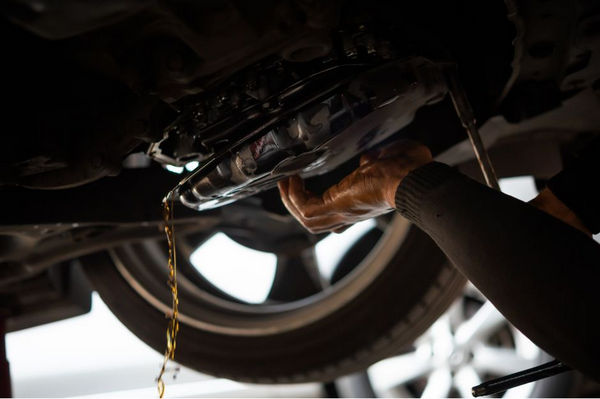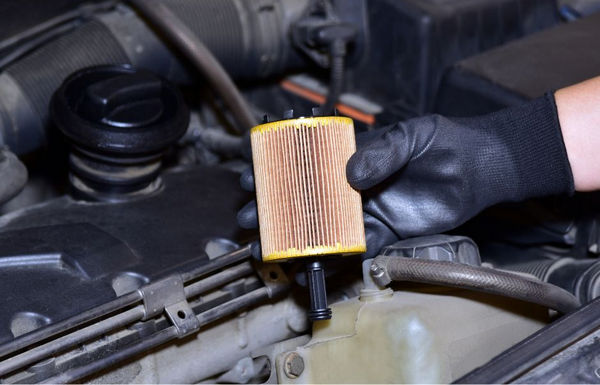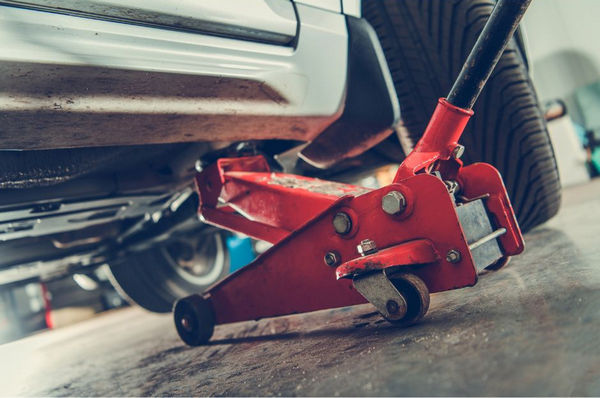As a car owner, changing the oil in your car is something that you should learn. Not only does it give you that sense of fulfillment as you work on your own car, but it can also help you save a lot of money. Oil change services can be expensive but some car shops like auto body shop Kapolei, are really good at what they do so it's worth every penny.

How to Know if Your Oil Needs Changing
A lot of drivers rely on their car's mileage to gauge whether or not it's time to change their car oil. You can also look into your car's user manual as to the recommended mileage to replace your oil. However, there are 5 common warning signs that you have to know so you can tell if your oil needs changing.
1. Glowing check engine or oil change light
Your car itself will tell if there's something wrong with the oil; perhaps there's a leak and there's not enough oil in the engine. It's best to check the dipstick and see what's going on before risking more damage to your engine parts.
2. The oil color is dark and dirty
The oil gets naturally dirty and turns darker as it is used. To compare, clean oil is usually amber in color and slightly translucent. If your oil turns black, you know it's really dirty and should be replaced right away.
3. Noisy engine
If you hear knocking or rumbling sounds in your engine as you start the car, that means it lacks lubrication. The oil in the machine serves as a protective layer to keep parts from brushing against each other. You'll know your car oil doesn't have an issue if your engine is quiet. If it makes a lot of unusual noise, it's best to check if it needs to be replaced.
4. Foul smell inside the car
You'll know if your oil is leaking if you smell oil inside the car. This can cause the engine to overheat thus you'll be able to smell gas or exhaust fumes as well. When this happens, better check your car right away.
5. Huge mileage
Get to know the right mileage for when it's time to change your car oil. Although every car is different, most car owners have their oil changed every 3,000 miles. New cars usually change their oil every 6,000 miles or 6 months. If your mileage is more than these numbers and you haven't had your oils changed, it's best to get it done as soon as possible.
How to Change Your Oil in 5 Simple Steps
If you haven’t tried changing your own car oil before, this beginner’s guide will help you. This is going to be an in-depth article on how to change your oil and after reading this, you will be able to change your own oil.
A lot of inexpensive car shops use cheap oil and really cheap filters which instead of saving money, will cost you more than what is necessary. When you change your car oil yourself, you'll know it's done properly and with good quality motor oil and oil filter.
Besides, why would you want to pay someone to do something that you can easily do on your own? Save your money and have fun working on your own car.
An oil change has 3 basic parts. First, you got to drain the oil. Second, you have to change the oil filter, and lastly, you have to fill it with the correct new oil. Let's go through these steps one by one.
Step 1: Prepare everything you need to change your oil
You can use common hand tools that you probably already have in your garage including
- A set of sockets with a ratchet
- Gloves - so you don't get the oil on your skin, especially in your fingernails
- Paper towels or clean microfiber towels to clean up
- Oil and oil filter (we'll teach you how to find the correct oil and correct filter for your car as you continue reading)
- Oil filter wrench - you might not need it but it's worth having just in case
- Oil catch pan so you can recycle your old oil
- Funnel - to fill up your engine with new oil
- Breaker bar just in case your drain bolt is hard to get off
- Jack stands or ramps to get your vehicle up

How to Find the Correct Oil for your Car
By the end of this article, you'll be an expert at changing your own car oil. Before doing that, it's important to know what oil is right for your car. You can look in your car's owner's manual or search on the internet for your car's oil and capacities. It should tell you how much oil you're going to need. You would also want to check the viscosity of the oil that you need.
The Difference between Synthetic Oil and Conventional Oil,
In a nutshell, conventional oil is actually cheaper than synthetic oil but the latter lasts longer. A lot of new cars run on synthetic oil. However, you can easily switch from synthetic to conventional and vice versa at any time.
When to Change your Car Oil
We mentioned 5 ways for you to know if your car oil needs to be changed. You can also find this information in your car’s user manual. It will tell you the recommended mileage for changing your car's oil. Most cars also have an oil life monitor that will signify when you need to change your oil.
If you can't find any information on when you need to change your oil, we suggest changing your car oil around 5,000 miles.
How to Find the Right Oil Filter for Your Car
There are a lot of oil filters out there but which one do you pick? The best thing to do is to match what the manufacturer says in your owner's manual. Remember that oil filters are application-specific. You can't substitute a larger filter just because it fits the threads of your engine. Listen to the manufacturer on your car's manual.
Once you’ve got everything you need, it’s time to proceed to the next step.
Step 2: Drain the used oil
The first thing you need to do is to jack your car up and get underneath it. It's time to get dirty. Get to the oil drain plug underneath the vehicle. Make sure you jack your car up and block off the rear tire so the car doesn't roll.
The other thing you want to do is if you have an automatic car, make sure it's in park. For manual cars, put it in 1st gear and pull the emergency brake to prevent the car from rolling.
Set up the jack in place right where your jacking points are. These are the little indents in that area of the frame that is meant to support the vehicle.
Once your car is jacked up, get your jack stands and place them under the car where there's a big piece of metal on the frame. Lower the car down into the jack stands and then you have plenty of room to get to the oil pin.
You can also use ramps to double the protection from the car falling down on you. It's also the easiest and safest and raises your vehicle pretty high so you can have enough crawling space underneath.
The next thing you need to do is to locate the drain pan. It's usually black and has a bolt coming out. Behind the drain pan, you can locate your oil filter. The oil filter is actually on top of the engine but there are cars where it's underneath. It's pretty easy to get to this and it's really easy to get the drain plug.
Before removing the drain plug, get your oil collection pan and slide it under. Use a socket on your ratchet and loosen it counterclockwise. If you encounter a problem with your normal-size ratchet, use the long breaker bars. It will give you more leverage.

Once it gets really loose, make sure your drain pan is ready to go and you can loosen it entirely by hand. Wait for all the oil to drain out. The oil collects in the drain pan on some oil drain plugs. There's a gasket to help seal the plug. These gaskets are generally for one-time use so take off the old gasket and replace it with a new one.
You can simply screw in the drain plug by hand and it should tighten right up. Wipe away extra oil before tightening it down all the way. This way, your drain pan stays clean and you'll know if there's any oil leaking from the drain plug down the road.
Next is to tighten your drain plug. You don't want to overtighten it or you'll strip the drain plug which can cause more problems. After draining, screw in the drain plug and move on to the next step.
Step 3: Change the old oil filter
Locate where the oil filter is and loosen it with your hand. If it’s too tight, use a wrench. Make sure the oil catch can is right below where your oil filter is because it's going to leak oil.
Take the old filter out and get your new filter. Pre-oil your new filter to prevent the car from running dry when you first start it up. Now what you want to do is to get oil around the gasket. It's going to prevent leaks as well. You can screw the new oil filter and tighten it by hand.

Step 4: Add the new oil
Clean the area first before taking the cap off of your car oil container. It's usually at the top of the engine and it should say engine oil on the sign. After cleaning, take the cap off and place your funnel in there. Now, you can fill the engine up with brand-new oil.
There should be a scale on the side that tells you how many quarts or liters are needed to fill it. Make sure to do this on a level surface. Always have a towel ready just in case the oil spills on engine parts.
After filling your car with new oil, close it up. And you're off to the last step.

Step 5: Get the car off the jack stands or ramp
Once your car is on level ground, check the added oil. Start the car and make sure that there are no oil lights or engine lights on. If it doesn't have the oil lights or check engine lights on, it means you’re all good.
Let the engine sit for about 5 minutes so all the oil drops back down. Get a towel, pull your dipstick out and clean it off. Put it back in and make sure it's pushed all the way down and then pull the dipstick back out. Look at the dipstick and make sure that the oil level is good.
If your oil level is too low, add a little bit of oil and check the level again. Don't in too much oil as it may cause engine problems.
And there you have it! That's your complete guide to changing the oil in your car. Now that you know the steps to take, try doing it on your own next time!

Where to take your used car oil?
You can go to your local garage or local recycling center and sell it to them so it doesn't become an environmental hazard.
Changing your car oil isn't really that hard. Anyone with the right tools and steps to follow can do it. Just follow the steps we've provided and you're good to go.
Remember to check if your oil needs to be changed according to the noise, oil color, smell, or mileage. When you notice one or two of these things, it's time to change your oil.
After all, there are just 3 basic parts of this process. Draining the oil, changing the oil filter, and filling it with new oil. If you're not too confident to do it on your own, it's alright. That's why there are auto service and oil changes available near you.